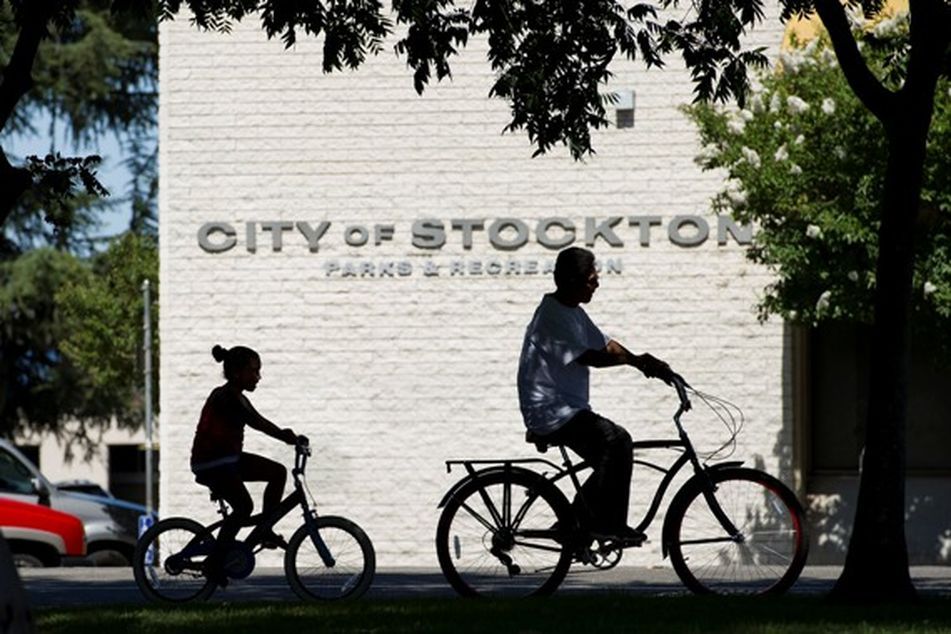What Stockton says about muni bond market

Stockton, Calif., is not indicative of most other cities in the municipal bond market.
Stockton, Calif.’s bankruptcy filing will allow it to get out from under mountains of debt and costly union contracts, but is not indicative of the financial health of other municipal bond borrowers around the country.
“Stockton was heading in this direction for a while, and this was not unexpected, because they had all the ingredients for bankruptcy,” said Richard Ciccarone, managing director and chief research officer at McDonnell Investment Management LLC, which manages more than $15 billion, including $8 billion in muni bond portfolios.
“But this is not typical of the muni market right now,” he said, “where the median numbers show cash on hand has been climbing even though there are still a number of government bodies on the fiscal edge.”
Nationwide, only 2% of cities have just 30 days’ worth of cash on hand, and only 8% of cities have just 60 days’ worth, which he said is an improvement from a year ago, Mr. Ciccarone said.
“Stockton is an example that munis are not risk-free, even though the majority of municipalities are doing better because they have taken actions to lower debt levels and reduce labor costs,” he said.
RELATED ITEM Mutual funds with exposure to Stockton muni bonds
While the actual filing by the city of nearly 300,000 residents was not a surprise to most municipal bond market watchers, it does represent the first bankruptcy under a new California law that requires periods of debt negotiation prior to bankruptcy.
Stockton has been in negotiations with its creditors and labor unions since late March under AB 506, the new California law requiring mediation before a municipality can file for reorganization of its debt.
It was the first use of the law, which establishes a 60-day negotiation window that can be extended to 90 days, depending on the progress of the negotiations.
Part of the problem in Stockton was an unwillingness on the part of the labor unions to work with the local government, and part of the problem was a government unwilling to make difficult decisions, according to Tom Dalpiaz, senior vice president at Advisors Asset Management Inc., which has $425 million under management, including $310 million in muni bond portfolios.
“We know [government officials] have been in consultations with the unions for quite some time, and they felt they couldn’t do anymore,” he added.
At the same time, bankruptcy should not be taken lightly, as it comes with plenty of downside, including the loss of access to the $3.5 trillion municipal bond market, a major source of project funding for state and local governments.
“It’s very expensive to go through bankruptcy and it takes years to come out of it,” said Mr. Dalpiaz.
“Bondholders should know that the vast majority of these municipalities are fighting the good fight every day and trying to keep their access to the bond market intact,” he added. “There are over 55,000 separate issuers of muni bonds out there, and we could put on one hand the ones that have done the deed and filed for bankruptcy, so I think we’ve fought off the notion that there are hundreds of municipalities ready to fall off the cliff.”
RELATED ITEM Stockton’s default traced to stock gamble that bombed
To put the muni bond market’s default rate in perspective, Mr. Dalpiaz pointed out that the average annual default rate between 1970 and 2011 was less than 0.01%.
In most cases, bankruptcy is seen as a last resort, though an efficient means of shedding restrictive union contracts.
“In the vast majority of cases, the bankruptcy filings are done to remove onerous labor contracts,” said Eric Friedland, head of municipal research at Schroder Investment Management Ltd., which has $300 billion under management, including $2 billion in muni bond funds.
In terms of other California cities on the brink of failure, Mr. Ciccarone said he can think of at least a dozen that are right behind Stockton.
Then again, the Stockton story is somewhat unique in that the government budget was inflated beyond repair due to a housing market bubble that spread over from San Francisco, just 80 miles away.
“Stockton is a town that didn’t really have much of an economy on its own,” Mr. Friedland said.
“The situation in Stockton has been telegraphed well in advance of even the financial crisis, because you could see that the situation was similar to those that occurred before in California,” he said. “It expanded solely because of cheap housing.”
This story was supplemented by reporting from Bloomberg News.
/images/newsletters src=”/wp-content/uploads2012/07/twitter-bullet.png” Follow Jeff Benjamin
Learn more about reprints and licensing for this article.








